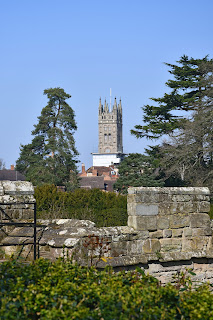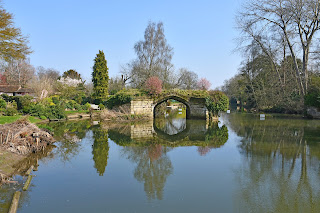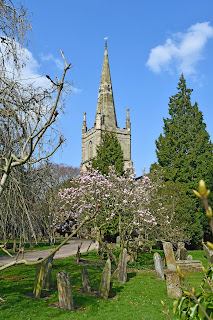Stratford-upon-Avon and Warwick Castle
Our last proper day trip during my friend’s visit took us to the Midlands. My friend and I took an early train to Leamington Spa to meet my housemate Harry (who, for the purposes of this blog, chose the epithet “Harry the caper-denier” over much more flattering ones, like “Harry the Tall” and “Harry the rugged-chested”). Harry the caper-denier, so-called because he refuses to believe that capers are anything but olive raisins, picked us up in his car and drove us to the half-an-hour-distant Stratford-upon-Avon.
The quaint
town is most famous for being the birthplace of Shakespeare, but it has another
claim to fame: it is also the deathplace of Shakespeare. Since everything was
still closed, we walked around and saw his birthplace, his school, the house
where he lived, and the church where he is buried from the outside, before
returning to the parking lot and driving to Warwick.
Warwick
Castle is yet another castle built by William the Conqueror, but a burh had
been established in the same location by the
ruler Æthelflæd as early as
914. The permanent exhibition, however, pays more attention to the later
history of Warwick, particularly its fate as a country house. It houses, for
example, the deathbed of Queen Anne, as well as – on a very different note – a
porridge pot that could hold 545 litres of punch.
We wandered
outside just in time to investigate the trebuchet and catch a bird of prey
show. The falconer had three birds of prey on show that day: a Harris’s hawk, a
white-tailed eagle, and a peregrine falcon. The white-tailed eagle, he
explained, was rather ill-tempered, but there was hope that his arranged
marriage to a much larger and older female eagle would bring him into line. The
peregrine falcon, on the other hand, loved nothing better than to fly off and
fight other peregrine falcons, though there were fortunately none within his
sight that day.
After
eating lunch at a local restaurant, Harry dropped us off at Leamington again,
and we got back to Oxford before four o’clock.






































Comments
Post a Comment